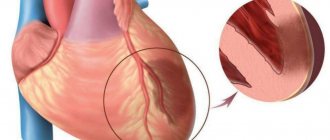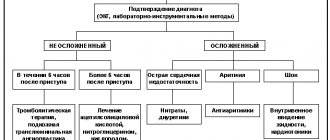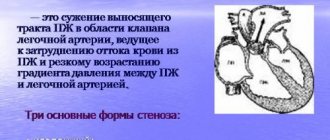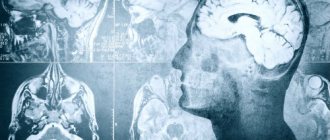Waking up with a racing heart can be quite frightening, but it is rarely a cause for concern. Factors that can cause heart palpitations in the morning include diet, stress, lack of sleep and arrhythmias, for example.
Sometimes, after waking up, you may feel like your heart is beating or pounding very quickly. At the same time, you may feel trembling and feel anxious.
Although frightening, it is usually related to everyday factors such as anxiety and diet, and is usually temporary. Diabetes, sleep disturbances, or anemia can also cause heart palpitations.
If you experience heart palpitations regularly, you should see a doctor who can determine and treat the cause.
In this article, we will look at the reasons for waking up with a racing heart, and also tell you when to see a doctor.
Stress and anxiety
Increased levels of anxiety and stress can cause the release of hormones into the blood that increase your heart rate.
Anxiety is a very common cause of rapid heartbeat. According to data published in the Journal of American Family Physician, about 31% of cases of palpitations are associated with mental factors, including stress, anxiety or internal conflict.
Rapid heartbeat in the morning sometimes occurs in people with a difficult lifestyle, as well as those suffering from anxiety disorders. This condition may be more pronounced during periods of high stress or with increased symptoms of anxiety disorders, although it can also sometimes occur unexpectedly.
People who are stressed or have anxiety disorders may also experience other symptoms:
- trouble falling or staying asleep
- constant worry
- problems with rest
- shortness of breath
- fast, shallow breathing
Nutrition
Diet can have a significant impact on the quality of your sleep, and certain types of food—especially if eaten at night—may increase your risk of waking up with a racing heart.
Sugar before bed
Eating sugary foods before bed can cause you to wake up with a racing heart.
The body metabolizes sugar easily, and eating sugary foods can cause your blood sugar levels to spike. This extra sugar in the blood can cause the release of stress hormones, which can cause symptoms similar to those of stress.
Caffeine
Consuming caffeine can also cause heart palpitations. Caffeine, a stimulant found in coffee, tea and soda, can cause heart palpitations.
The following symptoms will also be observed:
- fright
- nervousness
- anxiety
- trouble falling or staying asleep
Dehydration
Dehydration can also cause an irregular heartbeat. Mild dehydration can cause symptoms such as thirst, dry mouth, and decreased urine output.
If dehydration worsens, rapid heart rate, rapid breathing, and low blood pressure may occur.
Alcohol at night
Drinking large amounts of alcohol at night can cause heart palpitations in the morning.
Consuming alcohol increases your heart rate and the body may take some time to recover.
The following symptoms are also observed:
- extreme thirst
- nausea
- muscle pain
- headache
- fatigue
Heartbeat
Some time ago I started having palpitations.
This mainly happens in the morning after, due to circumstances, I have had little sleep. At 6 am I get up normally, after which I have the opportunity to take a nap for another hour. After waking up this time, literally the moment I open my eyes, my heart starts beating so fast and so hard that I literally can’t get up!
After some time everything calms down.
Answered: 15
29/11/2007 17:32
since the conversation is not theoretical, I would refrain from describing in detail all possible options
Release form, composition and packaging
Excipients: L-arginine, sodium bicarbonate, crospovidone, magnesium stearate.
Shell composition: hypromellose, sucrose, titanium dioxide, macrogol 4000.
6 pcs. - blisters (1) - cardboard packs.
pharmachologic effect
NSAIDs. Ibuprofen, the active substance of the drug Faspik, is a derivative of propionic acid and has analgesic, antipyretic and anti-inflammatory effects due to the non-selective blockade of COX-1 and COX-2, as well as an inhibitory effect on the synthesis of prostaglandins.
The analgesic effect is most pronounced for inflammatory pain. The analgesic activity of the drug is not of the opioid type.
Like other NSAIDs, ibuprofen has antiplatelet activity.
The analgesic effect when using the drug Faspik develops 10-45 minutes after its administration.
Ankylosing spondylitis, or ankylosing spondylitis, is a term that describes a form of arthritis that primarily affects the joints of the spine. This disease usually affects the small joints between the vertebrae and reduces the mobility of these joints until the formation of ankylosis (bones fused to each other).
Pharmacokinetics
Suction
After oral administration, the drug is well absorbed from the gastrointestinal tract. After taking Faspik on an empty stomach in the form of tablets at a dose of 200 mg and 400 mg, the Cmax of ibuprofen in plasma is approximately 25 mcg/ml and 40 mcg/ml, respectively, and is achieved within 20-30 minutes.
After taking Faspik on an empty stomach in the form of a solution at a dose of 200 mg and 400 mg, the Cmax of ibuprofen in plasma is approximately 26 mcg/ml and 54 mcg/ml, respectively, and is achieved within 15-25 minutes.
Distribution
Plasma protein binding is about 99%. It is slowly distributed in and cleared from synovial fluid more slowly than from plasma.
Metabolism
Ibuprofen is metabolized in the liver primarily by hydroxylation and carboxylation of the isobutyl group. Metabolites are pharmacologically inactive.
Removal
It is characterized by two-phase elimination kinetics. T1/2 from plasma is 1-2 hours. Up to 90% of the dose can be found in the urine in the form of metabolites and their conjugates. Less than 1% is excreted unchanged in urine and, to a lesser extent, in bile.
Dosage
The drug is taken orally.
For adults and children over 12 years of age, the drug is prescribed in tablet at an initial dose of 400 mg; if necessary, 400 mg every 4-6 hours. The maximum daily dose is 1200 mg. Take the tablet with a glass of water (200 ml). To reduce the risk of developing dyspeptic side effects, it is recommended to take the drug with meals.
The drug should not be taken for more than 7 days or in higher doses. If it is necessary to use it for a longer period or in higher doses, consult a doctor.
In the form of an oral solution, the drug is prescribed to adults and children over 12 years of age, the drug is prescribed in a daily dose of 800-1200 mg (4-6 sachets of 200 mg or 2-3 sachets of 400 mg). The maximum daily dose is 1200 mg.
Before use, the contents of the sachet are dissolved in water (50-100 ml) and taken orally immediately after preparing the solution during or after meals.
To overcome morning stiffness in patients with arthritis, it is recommended to take the first dose of the drug immediately after waking up.
In patients with impaired renal, liver or cardiac function, the dose of the drug should be reduced.
Overdose
Symptoms: abdominal pain, nausea, vomiting, lethargy, drowsiness, depression, headache, tinnitus, metabolic acidosis, coma, acute renal failure, decreased blood pressure, bradycardia, tachycardia, atrial fibrillation, respiratory arrest.
Treatment: gastric lavage (only within 1 hour after administration), activated charcoal, alkaline drinking, forced diuresis, symptomatic therapy (correction of acid-base status, blood pressure).
Drug interactions
The effectiveness of furosemide and thiazide diuretics may be reduced due to sodium retention associated with inhibition of prostaglandin synthesis in the kidneys.
Ibuprofen may enhance the effect of indirect anticoagulants, antiplatelet agents, fibrinolytics (increasing the risk of hemorrhagic complications).
When administered simultaneously with acetylsalicylic acid, ibuprofen reduces its antiplatelet effect (an increase in the incidence of acute coronary insufficiency in patients receiving small doses of acetylsalicylic acid as an antiplatelet agent is possible).
Ibuprofen may reduce the effectiveness of antihypertensive drugs (including slow calcium channel blockers and ACE inhibitors).
Isolated cases of increased plasma concentrations of digoxin, phenytoin and lithium while taking ibuprofen have been described in the literature. Agents that block tubular secretion reduce excretion and increase plasma concentrations of ibuprofen.
Faspik, like other NSAIDs, should be used with caution in combination with acetylsalicylic acid or other NSAIDs, because this increases the risk of adverse effects of the drug on the gastrointestinal tract.
Ibuprofen may increase plasma concentrations of methotrexate.
Combination therapy with zidovudine and Faspic may increase the risk of hemarthrosis and hematoma in HIV-infected patients with hemophilia.
The combined use of Faspik and tacrolimus may increase the risk of nephrotoxicity due to impaired synthesis of prostaglandins in the kidneys.
Ibuprofen enhances the hypoglycemic effect of oral hypoglycemic agents and insulin; Dose adjustment may be necessary.
An ulcerogenic effect with bleeding has been described when Faspic is combined with colchicine, estrogens, ethanol, and corticosteroids.
Antacids and cholestyramine reduce the absorption of ibuprofen.
Caffeine enhances the analgesic effect of Faspik.
When Faspik is used simultaneously with thrombolytic agents (alteplase, streptokinase, urokinase), the risk of bleeding increases.
Cefamandole, cefoperazone, cefotetan, valproic acid, plicamycin, when used simultaneously with Faspic, increase the incidence of hypoprothrombinemia.
Myelotoxic drugs, when used simultaneously, increase the manifestations of Faspik's hematotoxicity.
Cyclosporine and gold preparations enhance the effect of ibuprofen on prostaglandin synthesis in the kidneys, which is manifested by increased nephrotoxicity.
Ibuprofen increases the plasma concentration of cyclosporine and the likelihood of developing its hepatotoxic effects.
Inducers of microsomal oxidation (phenytoin, ethanol, barbiturates, rifampicin, phenylbutazone, tricyclic antidepressants) increase the production of hydroxylated active metabolites of ibuprofen, increasing the risk of severe hepatotoxic reactions.
Microsomal oxidation inhibitors reduce the risk of hepatotoxicity from ibuprofen.
Pregnancy and lactation
The drug is contraindicated for use during pregnancy and lactation (breastfeeding).
The use of Faspik may adversely affect female fertility and is not recommended for women planning pregnancy.
Side effects
From the digestive system: NSAID gastropathy - abdominal pain, nausea, vomiting, heartburn, loss of appetite, diarrhea, flatulence, constipation; rarely - ulceration of the gastrointestinal mucosa (in some cases complicated by perforation and bleeding); possible - irritation or dryness of the oral mucosa, pain in the mouth, ulceration of the gum mucosa, aphthous stomatitis, pancreatitis, hepatitis.
From the respiratory system: shortness of breath, bronchospasm.
From the senses: hearing loss, ringing or noise in the ears, toxic damage to the optic nerve, blurred vision or double vision, scotoma, dryness and irritation of the eyes, swelling of the conjunctiva and eyelids (allergic origin).
From the central nervous system and peripheral nervous system: headache, dizziness, insomnia, anxiety, nervousness and irritability, psychomotor agitation, drowsiness, depression, confusion, hallucinations; rarely - aseptic meningitis (more often in patients with autoimmune diseases).
From the cardiovascular system: heart failure, tachycardia, increased blood pressure.
From the urinary system: acute renal failure, allergic nephritis, nephrotic syndrome (edema), polyuria, cystitis.
From the hematopoietic system: anemia (including hemolytic, aplastic), thrombocytopenia, thrombocytopenic purpura, agranulocytosis, leukopenia.
From laboratory parameters: possible increase in bleeding time, decrease in serum glucose concentration, decrease in creatinine clearance, decrease in hematocrit or hemoglobin, increase in serum creatinine concentration, increase in the activity of liver transaminases.
Allergic reactions: skin rash (usually erythematous or urticarial), skin itching, angioedema, anaphylactoid reactions, anaphylactic shock, bronchospasm, dyspnea, fever, erythema multiforme exudative (including Stevens-Johnson syndrome), toxic epidermal necrolysis (syndrome) Lyell), eosinophilia, allergic rhinitis.
With long-term use of the drug in high doses, the risk of developing ulcerations of the gastrointestinal mucosa, bleeding (gastrointestinal, gingival, uterine, hemorrhoidal), and visual impairment (impaired color vision, scotoma, damage to the optic nerve) increases.
Storage conditions and periods
The drug should be stored out of the reach of children at a temperature not exceeding 40°C. The shelf life of tablets is 2 years, granules are 3 years.
Indications
— febrile syndrome of various origins;
— pain syndrome of various etiologies (including sore throat, headache, migraine, toothache, neuralgia, postoperative pain, post-traumatic pain, primary algodismenorrhea);
- inflammatory and degenerative diseases of the joints and spine (including rheumatoid arthritis, ankylosing spondylitis).
Contraindications
- erosive and ulcerative diseases of the gastrointestinal tract (including peptic ulcer of the stomach and duodenum in the acute phase, Crohn's disease, UC);
- “aspirin” asthma;
- hemophilia and other bleeding disorders (including hypocoagulation), hemorrhagic diathesis;
- bleeding of various etiologies;
- diseases of the optic nerve;
- pregnancy;
- lactation period;
- children under 12 years of age;
- hypersensitivity to the components of the drug;
- history of hypersensitivity to acetylsalicylic acid or other NSAIDs.
The drug should be used with caution in patients with heart failure, arterial hypertension, liver cirrhosis with portal hypertension, hepatic and/or renal failure, nephrotic syndrome, hyperbilirubinemia, gastric and duodenal ulcers (history), gastritis, enteritis, colitis, diseases blood of unknown etiology (leukopenia and anemia), as well as in elderly patients.
special instructions
If signs of bleeding from the gastrointestinal tract occur, Faspik should be discontinued.
The use of Faspik may mask objective and subjective symptoms of infection, so the drug should be prescribed with caution to patients with infectious diseases.
The occurrence of bronchospasm is possible in patients suffering from bronchial asthma or allergic reactions in history or in the present.
Side effects can be reduced when using the drug in the minimum effective dose. With long-term use of analgesics, there is a possible risk of developing analgesic nephropathy.
Patients who experience visual disturbances during Faspik therapy should discontinue treatment and undergo an ophthalmological examination.
Ibuprofen may increase liver enzyme activity.
During treatment, monitoring of the peripheral blood picture and the functional state of the liver and kidneys is necessary.
When symptoms of gastropathy appear, careful monitoring is indicated, including esophagogastroduodenoscopy, a blood test to determine hemoglobin, hematocrit, and a stool test for occult blood.
To prevent the development of NSAID gastropathy, it is recommended to combine ibuprofen with prostaglandin E drugs (misoprostol).
If it is necessary to determine 17-ketosteroids, the drug should be discontinued 48 hours before the study.
During the treatment period, ethanol intake is not recommended.
The drug contains sucrose (1 tablet - 16.7 mg, 1 bag of granules - 1.84 g), which should be taken into account if patients have corresponding hereditary fructose intolerance, glucose-galactose malabsorption syndrome or sucrase-isomaltase deficiency.
Impact on the ability to drive vehicles and operate machinery
Patients should refrain from all activities that require increased attention and speed of psychomotor reactions.
For impaired renal function
In patients with impaired renal function, the dose of the drug should be reduced.
During treatment, monitoring of the functional state of the kidneys is necessary.
For liver dysfunction
In patients with impaired liver function, the dose of the drug should be reduced.
Use in old age
Gymnastics of Tibetan lamas after awakening
Nightmares
Nightmares can cause physical symptoms in the body and can cause a person to wake up with their heart pounding. They can also cause profuse sweating and shaking.
Nightmares can also cause feelings of panic. They are more common in children than in adults. However, you will not always remember the specific details of these nightmares.
Sleep paralysis can also lead to increased heart rate. In this case, the person cannot move after waking up. This usually causes intense feelings of fear and hallucinations, and may also cause chest tightness.
If nightmares are the cause, the rapid heart rate usually calms down soon after waking up.
Causes
Among the causes of tachycardia development, cardiac and extracardiac (extracardiac) are distinguished.
The first group includes the following conditions:
- Cardiac ischemia.
- Arterial hypertension.
- Acute and chronic heart failure.
- Endo-, myo- or pericarditis.
- Congenital and acquired valve defects.
- Atherosclerosis of the aorta and other large vessels.
From the nervous system, tachycardia can occur:
- Cardiopsychoneurosis.
- Neuroses and psychoses.
Also, increased heart rate can be caused by:
- Anemia of various origins.
- Hypoxemia (insufficient oxygen saturation of blood cells).
- Hypovolemic and hemorrhagic shock or collapse.
- Diseases of the endocrine system (thyrotoxicosis).
- Oncological diseases (pheochromocytoma).
- Hyperthermia that develops as a result of inflammatory or infectious processes in the body (ARVI, influenza, pneumonia, etc.).
Tachycardia can also occur while taking a number of medications and chemical compounds. These include:
- Hormonal drugs (corticosteroids, thyroid-stimulating drugs).
- Sympathomimetics (Adrenaline).
- Anticholinergics (Platifillin, Atropine).
- Diuretics (Furosemide, Indapamide).
- Drinks containing caffeine or ethyl alcohol.
- Nicotine.
Sleep apnea
Sleep apnea causes many sleep-related symptoms, including a rapid heartbeat upon waking.
Sleep apnea occurs when a person stops breathing repeatedly during the night. These sudden stops in breathing can reduce oxygen levels and place additional stress on the heart.
Other symptoms of sleep apnea include:
- very loud snoring, which can even wake a person up
- when waking up, a person gasps for air
- dry mouth upon waking
- the person does not feel well rested the next day
It is very important to treat sleep apnea, as the reduction in oxygen supply to the body in general and the brain in particular can lead to serious consequences over time. Sleep apnea can also contribute to atrial fibrillation.
Atrial fibrillation
Atrial fibrillation occurs when the electrical signals in the heart are out of sync, causing the upper chambers to beat too quickly.
Atrial fibrillation is the most common type of heart rhythm disorder. It sometimes feels like a racing heart.
With atrial fibrillation, the following are also observed:
- shortness of breath
- anxiety
- chest pain
- weakness and fatigue
- dizziness
Atrial fibrillation itself is not a serious condition, although it can increase the risk of some complications, including heart failure and stroke.
Tachycardia – a symptom of a disease or an independent disease?
Psycho-emotional and physical stress, disruption of the endocrine system and a number of other functional changes can lead to increased release of hormones and thereby provoke an attack of tachycardia. It is one of the symptoms of arrhythmia and therefore appears more often in older people, as well as in those who lead an unhealthy lifestyle or have chronic diseases. Many patients who turn to specialists say that the disease accompanies them for a long period of time.
Causes
The main problem with a tachycardia attack is that even with mild symptoms, it can still cause irreparable damage to the body. According to statistics, the disease is very common and is found in 1 out of 5 inhabitants of the Earth. The disorder leading to the development of the disease occurs
| Violation | Sick | Cause |
| Physiological | Teenagers | Increased activity of the symptomatic nervous system |
| People performing heavy physical activity | Activation of a compensatory mechanism to enhance the supply of tissues with oxygen and nutrients | |
| Pathological | Formed in congenital and acquired pathologies | Diseases of the heart, kidneys, lungs and other organs. Increased blood pressure, disruption of the endocrine system. Anemia, infectious diseases, sudden increase in body temperature |
8
24/7
The impetus for the development of the disease can be given by any reason that a person does not even pay attention to. In addition to the well-known stress and overload, the reasons are:
- smoking and alcohol abuse;
- a sharp decrease in blood pressure caused by blood loss;
- taking certain medications;
- purulent infection and tumor formation.
Despite the fact that with tachycardia of any specific type, the heartbeat is greatly increased and is characterized by a frequency of more than 90 beats/min, nevertheless, the intervals between heartbeats and, accordingly, the rhythm of the beats themselves remain precisely adjusted.
An attack of tachycardia can begin suddenly and also end unexpectedly. The danger of the disease is that it can lead to heart failure, ischemia, myocardial infarction and, as a consequence, complete cessation of cardiac activity.
Symptoms and types
There is a certain number of diseases that are easy to identify due to the vivid severity of their symptoms. Tachycardia just belongs to the category of such diseases. Despite the fact that it is divided into several types, they are characterized by common features:
- faintness, shortness of breath;
- during an attack of tachycardia, the heart rate increases at night and during the day;
- general weakness with dizziness and nausea;
- painful sensations involving the chest and heart area;
- impaired blood supply to the brain, manifested in a feeling of lack of air and darkening in the eyes.
In addition to the main symptoms, there are typical features for each type of disease
| Type of tachycardia | Peculiarities |
| Sinus | Feeling of severe fatigue, correct heart rhythm, number of contractions 90 beats/min. It can be determined by counting the pulse and ECG. You can do without medical help. |
| Atrial | An unreasonable feeling of fear appears, the heartbeat is increased - frequency 140-250 beats/min. An ECG and urgent medication are required. |
| Paroxysmal gastric, supraventricular | Lasts from a couple of seconds to several days. Heart rate 140-220 beats/min, dizziness, heaviness and compression behind the sternum, nausea, increased sweating, drop in blood pressure and fainting. An attack of paroxysmal tachycardia requires urgent medical intervention, sometimes surgical. Poses a threat to life. |
| During pregnancy | Appears from 24-25 weeks. The number of beats increases by 20-25 contractions, characteristic weakness with dizziness, pain in the heart area. It is a normal reaction of the body to a lack of oxygen and nutrition for fetal growth. Dangerous if nausea and vomiting occur. |
| Childhood | May appear from birth. In infants, indicators include rapid breathing, restlessness with moodiness, and increased drowsiness. For older children, chest pain, fainting with shortness of breath, pallor, weakness and increased heart rate are typical. Urgent intervention is most often not required, but if left untreated it can become life-threatening. |
Any type of tachycardia requires examination of the patient and establishment of the exact causes of its occurrence. Prolonged course of the disease without proper monitoring can lead to subsequent complications.
8
24/7
Diagnostics
It is not difficult to detect an increase in heart rate. The frequency of contractions can be felt by checking the pulsation at the wrist. The patient clearly feels it.
Tachycardia is a disease that can be diagnosed in any age group. Among the patients there are patients with cardiac (pathological) and extracardiac (physiological) development factors.
Diagnosis in the first group is made based on the observations of specialists and the medical history collected during treatment.
It is more difficult to identify development in the second group. More often this happens during preventive examinations or treatment of other diseases. The diagnosis is made after:
- examination by a cardiologist or cardiorheumatologist;
- taking an electrocardiogram;
- conducting daily ECG monitoring;
- conducting a clinical and biochemical blood test, during which the number of red blood cells, hemoglobin and other cells is determined and the presence of leukemia and anemia is revealed;
- urine analysis to detect traces of adrenaline breakdown;
- thyroid hormone studies;
- Ultrasound and MRI diagnostics of the heart;
- electrophysiological studies;
- home heart rate monitoring with data recording in a special form.
The conducted research becomes the determining point when choosing the form of treatment.
Diagnosis necessarily includes the study of hereditary factors, as well as diseases suffered by a person before. Depending on the severity of the pathology, treatment is performed by a therapist, cardiologist or cardiac surgeon.
Treatment at different stages, risk factors
For therapy to work quickly and be effective, the catalyzing factor must be eliminated. Therefore, treatment is prescribed in accordance with the abnormalities identified during diagnosis.
- Almost always, in the initial stage of the disease, eliminating the cause of tachycardia leads to a complete recovery of the patient. In the future, he only needs to undergo regular preventive examinations.
- If the diagnosis failed to establish the source of the disease, or the therapeutic course to eliminate the cause did not produce the desired effect, attacks of tachycardia began again - what to do? – then sedatives and beta-blockers are prescribed. These drugs lower blood pressure and reduce the number of heartbeats. They are contraindicated for bronchial asthma, hypotension and a number of other pathologies.
- An additional method of therapeutic intervention is physiotherapy, as well as psychotherapeutic assistance.
- Dosages of drugs are purely individual and are prescribed by a specialist, based on the results of research and observations. Self-use may lead to loss of consciousness or complete heart block.
Depending on the type of disease, different types of emergency care and primary therapy are used.
- Sinus tachycardia - you can find out how to relieve an attack by calling any medical institution. The main way to provide assistance is to create conditions of complete rest for the patient.
- Attacks of ventricular tachycardia are similar to atrial tachycardia, and only a specialist can distinguish them after taking an ECG. It is impossible to eliminate this type of violation on your own. A course of clinical treatment is carried out. It is imperative to perform an examination to find out what the causes of an attack of tachycardia are, since this disease can manifest itself against the background of intoxication with medications or during a myocardial infarction.
Letting the disease take its course or self-medicate is dangerous, since an attack of tachycardia in its symptoms is similar to many diseases of the cardiovascular system - atrial fibrillation, cardiosclerosis, impaired synchrony of ventricular contraction and others. The further prognosis for recovery depends on the quality and timeliness of the treatment.
Forecast and prevention of the disease
Since an attack of tachycardia more often indicates the initial stage of cardiac dysfunction, the prognosis is made based on its cause:
- in case of heart failure and left ventricular dysfunction, it will be disappointing;
- if sinus tachycardia is the culprit, then in most cases it is satisfactory and even positive.
The main preventive measures are:
- timely detection of the disease;
- elimination of factors provoking its occurrence;
- therapeutic measures aimed at eliminating high heart rates.
It is mandatory to maintain a healthy lifestyle, avoid drinking alcohol, smoking and using drugs. Proper nutrition with foods containing a full range of vitamins, amino acids and microelements.
The patient must undergo annual preventive examinations and, if necessary, take prescribed medications. Treatment of attacks of tachycardia should be carried out only under medical supervision.
8
24/7
Diabetes
Diabetes is a disease that affects blood sugar levels. When blood sugar levels are low (hypoglycemia), people may experience heart palpitations and anxiety.
This is due to the release of adrenaline into the blood. Adrenaline is a hormone associated with the fight-or-flight response. The release of adrenaline can also cause:
- anxiety
- tingling
- sweating
Low blood sugar can also cause fatigue, confusion, hunger and nausea.
Over time, repeated episodes of high and low blood sugar can increase your risk of heart disease and other circulatory problems. Effective diabetes control helps reduce these risks.
Degree of disease development
There are various forms of paroxysmal tachycardia, depending on the anomalies in which part of the heart it is caused:
- Ventricular tachycardia - this pathology develops when the patient has defects in the heart muscle. For example, we can talk about scar lesions, tissue sclerosis, atrophic and other disorders. Ventricular tachycardia often occurs after such serious cardiac problems as ischemic disease, myocardial infarction, congenital or acquired defects.
- Supraventricular tachycardia - occurs in most cases against the background of a pathological state of the elements of the patient’s sympathetic nervous system.
Female sex hormones
Waking up with a racing heart can also be related to your menstrual cycle. In particular, heart palpitations may occur due to changes in hormone levels in the body.
Significant changes in estrogen and progesterone levels in the body can cause heart palpitations in some women.
As they approach menopause, their estrogen levels naturally decrease, which can also cause their heart rate to increase. Hot flashes can also cause heart palpitations.
What is tachycardia
The human heart beats 60 to 90 times per minute. This frequency is considered normal. An increase in this indicator over 90 beats is called tachycardia. This can happen both as a result of various pathological processes, and during the body’s adaptation to changing environmental conditions.
For example, a physiological increase in heart rate occurs during physical activity. Due to the increased need of cells for nutrients and oxygen, a compensatory increase in heart rate and blood pressure occurs. After completing the workout, these indicators usually return to normal.
Some medications
Certain medications, especially stimulants, can cause you to wake up with a racing heart.
Palpitations may be a side effect of the following medications:
- inhaled steroids used to treat asthma
- pseudoephedrine, which is a common ingredient in cold medicines
- Ritalin and Adderall, which people use to treat symptoms of attention deficit hyperactivity disorder
- some thyroid medications
If you are taking any medications, read the instructions and contact your doctor and tell him or her about your symptoms.
When to see a doctor
If you experience symptoms such as chest pain and dizziness along with a rapid heartbeat, seek emergency medical help. These are signs of a heart attack and require immediate medical attention.
However, a racing heart within a few seconds of waking up from a nap is likely not a problem. However, if symptoms continue for a longer period of time, it is important to see a doctor. A persistently rapid heartbeat may be a sign of an underlying problem.
You should also consult a doctor if you experience frequent or regular heart palpitations in the morning.
It may take time to properly diagnose the problem. Be sure to tell your doctor what medications you are taking. You will likely be given an electrocardiogram (ECG) to monitor your heart.
In many cases, doctors also prescribe a Holter monitor, which takes an ECG throughout the day. This gives the doctor a better understanding of the heart's activity and greatly aids in diagnosis.
Symptoms of tachycardia
The clinical picture of tachycardia depends on the duration of this condition and its severity. A physiological increase in heart rate may not be accompanied by unpleasant symptoms at all. Some patients report a feeling of heaviness in the heart area. Patients may also note that they subjectively feel each blow.
Persons suffering from CVS pathology often complain of chest pain and shortness of breath with little physical activity and even at rest.
The condition may also be manifested by a deterioration in general condition, weakness, fatigue, loss of appetite and dizziness. All these symptoms are explained by hemodynamic disturbances.
In severe cases, when there is a significant decrease in blood oxygenation, fainting and even cardiac arrest are possible.









